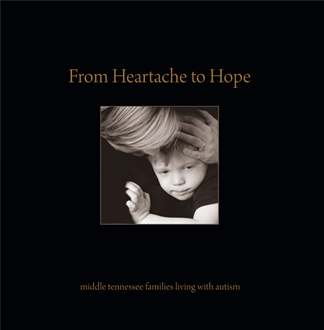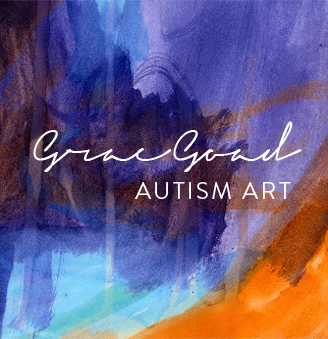It was one of those AHA! moments. Not exactly of the EUREKA! variety. You know, where the legendary bulb suddenly lights up the contents of one's formerly clouded cranium. This was more like a dimmer switch that was slowly turned up to it's full capacity. The AHA! relates to the awkward transition into adulthood by my only child, who has autism.
When Grace was diagnosed with autism at age 32 months, nearly three–which in 1997 was considered early detection–I was certain we'd lick this odd disorder. We'd cure her, by golly. Though deep down I had my doubts. An inner knowing, akin to the one I had from the first weeks of her life that she was different and near the end of her first year that she might even have autism. (My experience of the diagnosis was very limited, as most people's back then, and I dismissed the idea for two more years until it was made official.) My autism mentors–the strong mothers whom I chose as my role models for this different mothering pilgrimage–didn't believe in cures. Once on an extended phone call to one of them, I went around and around about the slight possibility and having an inkling of hope for a cure. If I talked long and earnest enough, I thought, I could get Tonya to agree with me. Then I'd be right. She was kind but adamant. She'd been there, too, but she'd laid that expect to rest and made peace with her son's autism.
In time, I began to realize these mothers were right. There is no cure. Cure fever would flame and wane over the next decade within our greater community. Until finally, at the threshold of adulthood, I surveyed the autism land and it seemed our community had made some peace that this is 98 percent of the time a permanent condition.
Okay. I set my sights that my daughter would be the next Temple Grandin! Time revealed that, too, at least for my daughter, was a pipe dream. Next on the vision agenda: College! She would go to college! Then, it became, well…maybe community college–? At five, my daughter was not making the progress of many of her seemingly higher functioning peers. I'd weathered the early years of grief, tossing the cure dreams in the garbage heap of typical expects. I vacillated between the stages of grief, wondering what I had done wrong. ("Was it those ibuprofen I'd taken, thinking my early twinges of pregnancy were a bad migraine?") Eventually, I learned the art of acceptance. Of making peace. Of seeing the good in this very-different-from my-imagined-life-experience.
Then as she turned five, I found myself returning to the imaginary beach: The shores of grief. When the tide is out you play. When it is in, sometimes you feel like you are drowning. Grief is like that. Only, by that time I had learned to dog paddle very well. The waves of grief were no longer as intense and overwhelming as in the beginning years of the journey. And I realized I was grieving because my daughter was most likely not going to go to college. But on the heels of that realization, I got it that a college degree was not a stamp of self-worth. My daughter brought worth and value into this world by the essence of her very being–college degree or not.
Another wall of grief met me smack on for a number of years after age nine, when a clinical psychologist told Grace's father and I, that Grace had intellectual disAbilities. This was the same psychologist who told us at five, Grace clearly did not have ID. My personal growth work the next few years included the dissection and processing of what it meant to have intellectual disAbilities and what meaning would I choose to give to it. My Eureka! on the tail end of that segue in my journey was that, just as it was meant for me to give birth to a differently abled child, it was divine perfection that she also have intellectual disAbilities. I would have the gift and the challenge/opportunity to show what fruits a most disabling diagnosis could bear. Because my daughter's brain is so impaired by autism, she still cannot carry on a conversation. Much of her development still ranges around 4 to 6 years of age. But look at what she has done. Look at the fruits of her differences: www.GraceGoad.com. As a 30-year veteran of communications: public and media relations, journalism, etc., and with an art background myself, I am blessed that I could use my gifts to help accentuate hers.
So here we are, in some ways, all grown up. In other ways, not. Back to that dimmer switch-activated light bulb that turned on, full glory. The problem was/is me. And my "expects." It is when I demand life to be a certain way, that I cause myself misery and suffering. And I had (a natural) expect that life would be a certain way when my daughter got to be this age. I had prepared myself for this lack of normalcy. I have lived in a lack of normalcy now for 18 years. But, I expected it to be easier. I expected her to be able to do more things for herself. I expected to feel more free. I am watching my friend's children go off to college and I'm still coaxing Grace to perform the minuscule movements of minimal hygiene and self-care. I'm still changing wet bed sheets, sometimes several times a week. I'm still very much the mother of a small child but in a big person's body and one accompanied by an attitude that did mature into sometimes maddening adolescense.
So, the dimmer switch came on as I lunged into the depths of an upolstered chair across the great room of my new condo talking late one Friday night with my best friend, also a mother of a child on the autism spectrum. Her child is now enrolled in college and experiencing his own challenges as a freshman. And she, her own. I had expected parts of my life now to be more like hers, like "others'". And there is the problem. The bump in the road. The hiccup in my attitude.
I can't claim I got unstuck and found my way into peace, harmony and acceptance in my current situation when that dimmer switched reached it's maximum turning point. But, I came to an important threshold of my own personal-ever-evolving spiritual journey of autism mothering of a young adult. I could continue to bitch and moan and fight it…an ugly, suffering-inducing route I'd taken this summer as I found myself spouting words I'd never before said, such as, "My child is driving me crazy!" Or, I could choose to go with the flow. Let go of the expect. Accept this is what is. Work with it. Go with it. Make the best of it–just as I have learned to do again. And again all these 18 years thus far. Just surrender to battle fight with things that are and aren't.
I'll keeping working on it. Breathing. Stumbling. Mumbling and remembering. Until I find that passageway through this stage. When I get to it–and probably along the way–I'll get back with you….
And, as I read this to my teacher, as it was freshly keyed upon my laptop screen, he smiled. Nodded. And reminded: "Rocks are hard. Water is wet…and sometimes the journey can be sad."
Too often, I have not given myself permission to feel sad–that nugget in the grief process. We discussed that. And he reminded me, too, as I knew, that–just as all I've written here about my grief journey from the begining to now–is normal.
To be continued.
Photo: Grayton Beach, Fla., October, 2011, ©LeisaHammett.com




